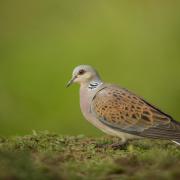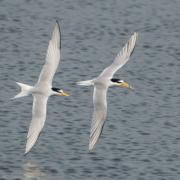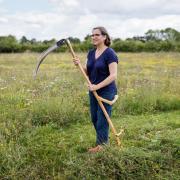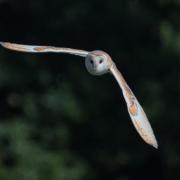It’s the world’s largest wildlife survey – the RSPB’s annual Big Garden Birdwatch on Saturday and Sunday, January 24 and 25. And it needs you.

Almost 7.5 million birds were counted in last year’s survey. Results were worrying for some species, such as greenfinches, which are continuing to decline. Numbers of starlings and song thrushes have dropped by an alarming 84% and 81% respectively since the Birdwatch began in 1979. Both species are on the UK ‘red list’, meaning they are of the highest conservation concern.
It’s not all bad news, however. For the first time in Birdwatch history, the great spotted woodpecker made it into the top 20 and goldfinches swooped into the number seven spot. Just 10 years ago, goldfinches were in 14th position, but scientists believe that the increase in people providing food like nyjer seed and sunflower hearts in gardens, may have contributed to their steady rise to number seven.
In 2015, the RSPB is looking for even more information about the wildlife in your garden. We still want you to count the feathered friends that visit during one hour - any hour - over the Big Garden Birdwatch weekend, because birds are an excellent indicator of the health of our countryside.
But we also want you to tell us more about other creatures that sometimes snuffle around and settle in your garden, so we get an even better picture of what’s happening to wildlife. This helps build an overall picture of how important our gardens are for giving wildlife a home.

You don’t have to see and count other species during your Big Garden Birdwatch hour. Just fill in the form to tell the RSPB whether you see them regularly, or have ever seen them in your garden, at any time of year.
The information on our non-feathered friends from last year’s survey highlighted that despite them being more common in rural areas, more than half of participants in urban areas have also spotted toads. In fact, toads were reported to have been seen monthly by almost a third of people. Nearly a quarter of people in rural gardens see badgers once a month and almost three quarters see hedgehogs, even though they are in serious decline.
So how can you get involved? First of all, it’s worth putting up some well-stocked feeders to entice local birds to your garden. To draw in as many birds as possible for the Big Garden Birdwatch weekend make sure you have topped up your feeding station a couple of weeks prior to January 24 – this will give birds a chance to become accustomed to the position of your feeders.
Include as wide an array of food as you can – peanuts for blue tits, great tits and coal tits, sunflower hearts for finches and mealworms or fat balls for robins. It is also worth investing in a trough for ground feeding birds, such as blackbirds and chaffinches.

Try counting your garden birds early in the morning or at dusk – these are the times when your feeders are likely to be busiest. Birds feed up after a cold winter night and before going to roost.
If you want to make your garden the perfect place for hedgehogs, toads and other wildlife there is also plenty you can do to make this happen. Winter is the perfect time to start planning all the colourful flowers that you can plant to provide a nectar rich buffet for bees and butterflies.
A pond is one of the best habitats you can have in a garden to bring in lots of creatures. Frogs and toads might spawn there in spring, dragonflies will dance over it in summer and newts might overwinter on the mud at the bottom. If space is limited even a bucket or reclaimed sink sunk into the ground can create a small, but valuable source of water in your backyard.
For plenty more information on giving nature a home in your area log on to
www.rspb.org.uk/homes for helpful advice and on things you can do in your garden.
So this new year, make it your resolution to get to know the wildlife in your area. Taking part in the Big Garden Birdwatch is the perfect way to start and perhaps by next January you will have a whole host of new neighbours to report.
Register to take part in Big Garden Birdwatch 2015 at www.rspb.org.uk/birdwatch.



























